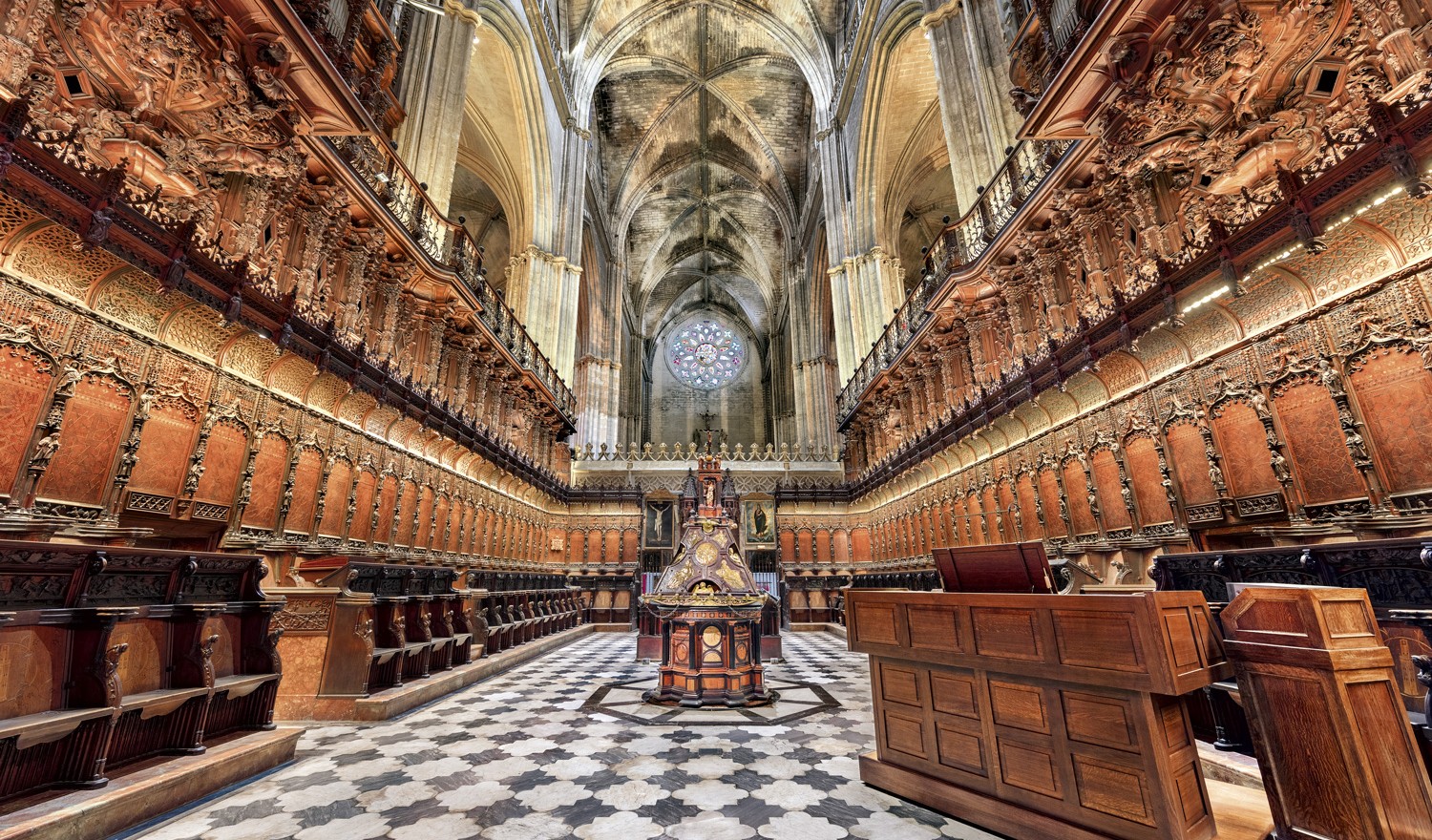Seville Cathedral is one of the most treasured monuments in our city. Therefore, at LOCK & enjoy! we will explain of history of Seville Cathedral, interesting facts, and answer some frequently asked questions that might interest you, encouraging you to visit.
Did you know we have lockers in Seville where you can leave your backpack while exploring the city? We are located at:
- Calle Zaragoza, 34.
- Calle Teniente Borges, 9.
- Calle Águilas, 27.
- Avenida Pablo Iglesias, 7.
- Calle Feria, 95.
Historical Stages
Here, we provide a brief overview of the most important historical moments in the construction of the Seville Cathedral.
12th Century
Originally, where the cathedral now stands, there was a mosque, which was Christianised by Ferdinand III after he captured the city during the reconquest of Seville. However, it was destroyed by an earthquake in 1356. For this reason, Charles V ordered the construction of a cathedral on the same site.
15th Century
The exact moment when construction began is still unknown, but most historians agree it started in 1434. Various authors and masters shaped the main lines of action until its completion.
16th Century and Beyond
In 1506, the works were completed, though there were no celebrations, as Philip I of Castile had died two weeks earlier. The result was one of the largest Gothic temples in the world by size and meticulous design.
From this point, Seville Cathedral underwent a series of noteworthy modifications:
- Renaissance. In 1528, the Main Sacristy, the Chapter House, and the Royal Chapel were constructed, and the Sacristy of the Chalices and the Alabaster Chapels were definitively completed.
- Baroque. Although the Church of the Tabernacle is independent of the cathedral, it is adjacent as it communicates with it. Construction began in 1618 and ended in 1758.
- Neo-Gothic. From 1825 to 1928, a series of unfinished works were completed, such as the doors of the Conception, San Cristobal, or the Prince. The first restoration works were also carried out.
21st Century
One of the main changes in recent years was the pedestrianisation of the Avenida de la Constitución, the main direct access route to the city centre. The reason was the detection of black crusts on certain walls and stones due to intense pollution from car gases on this avenue.
Moreover, restoration works have continued, specifically on the nearly 150 metres of facade. Numerous elements of this architectural complex have also been repaired, such as pinnacles or gargoyles.
Lastly, in 2011, the restoration of the main altarpiece took place, a project that lasted a total of 30 months.
Curiosities
After centuries of history, the curiosities surrounding this temple are numerous. At LOCK & enjoy! we have selected the most original and some lesser-known ones for most tourists.
Did you know it is the largest Gothic cathedral in the world? It measures 116 metres in length and 76 metres in width. Additionally, it is the third largest in the world overall, only surpassed by St Paul’s in London and the famous St Peter’s in the Vatican. Another curious fact we discovered is that it is the only cathedral in the world without a Latin cross; its floor plan is square.
Seville Cathedral is also known as the final resting place for very illustrious historical figures. The royal pantheon is in the Royal Chapel, thus in a very prominent place. Monarchs such as Ferdinand III of Castile, Alfonso X of Castile, and Peter I of Castile rest in this temple, along with their wives. Despite the misfortune that befell Christopher Columbus in his last years, his tomb is also here.
Find the lizard!
We recommend that during your visit you look up at the ceiling, as there is a hanging crocodile. Legend has it that this living animal arrived in the city in the mid-13th century. It was part of a delegation sent by the Sultan of Egypt to persuade the monarch (Alfonso X the Wise) to arrange a marriage between the former’s eldest son and one of the king’s daughters. However, the king refused due to religious differences. Following this event, when the animal died it was stuffed and hung in the area of the Orange Tree Courtyard, although it was later replaced with a wooden one.
We would also like to highlight that Seville Cathedral was declared a UNESCO World Heritage Site in 1987, hence it is one of the hallmarks of both Seville and Spain.
Frequently Asked Questions
During visits to monuments of this type, frequently asked questions always arise. We answer them below to help you plan your visit better.
What are the visiting hours? Open Monday to Saturday, from 10:45 AM to 6:00 PM. However, on Sundays, visiting hours are reduced, starting at 12:00 PM and ending at 6:00 PM.
Price? There are tickets of all types, as there are general visits and others that are more special or focused on other areas. For example, one that includes a visit to the temple and the Giralda; the general rate is €12.
With audio guide? We recommend using a support that helps you have a basic notion of each space during your visit. In this case, the price of tickets increases, although it is well worth it.
Discover Seville! The cathedral is a must-visit if you are travelling in the city, even if you only have one day. Book a locker in Seville with us and enjoy the city while we take care of your belongings. We await you!








 Sevilla
Sevilla